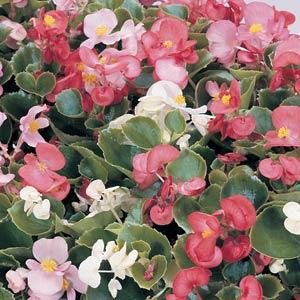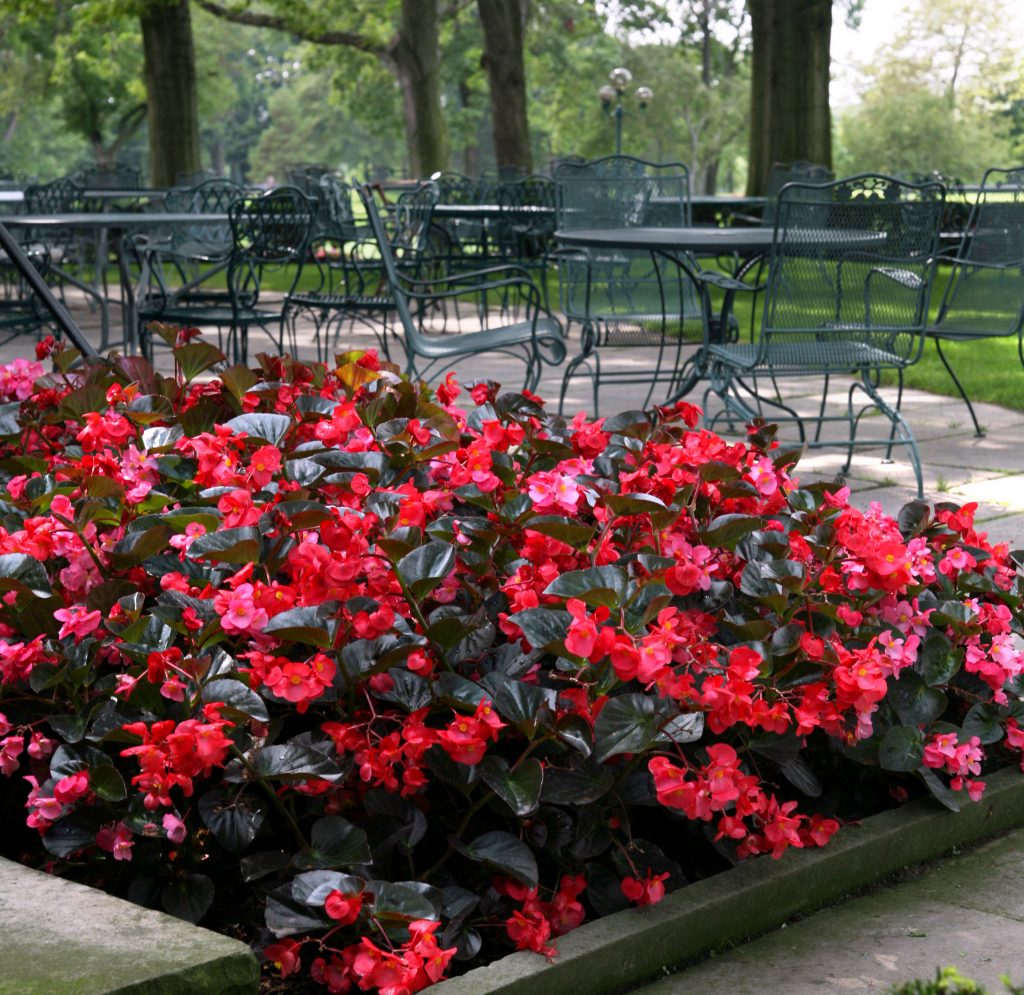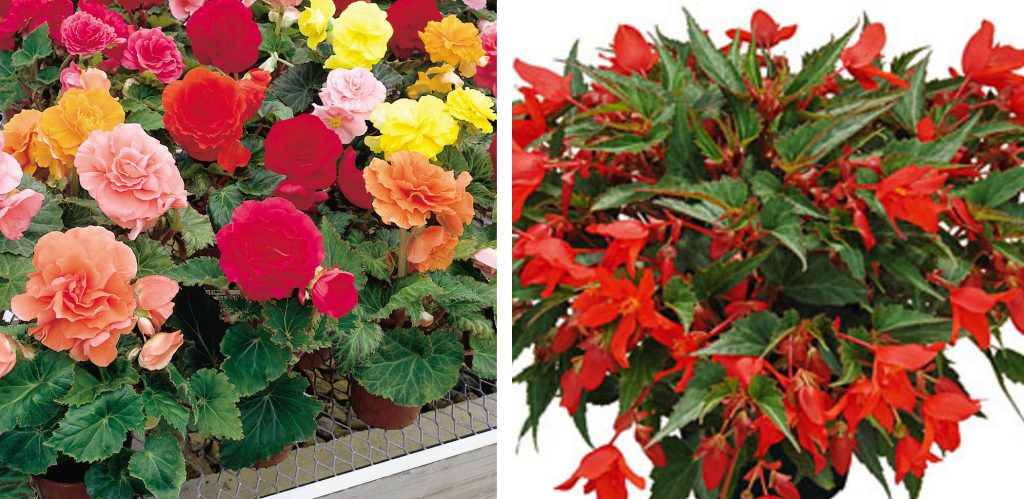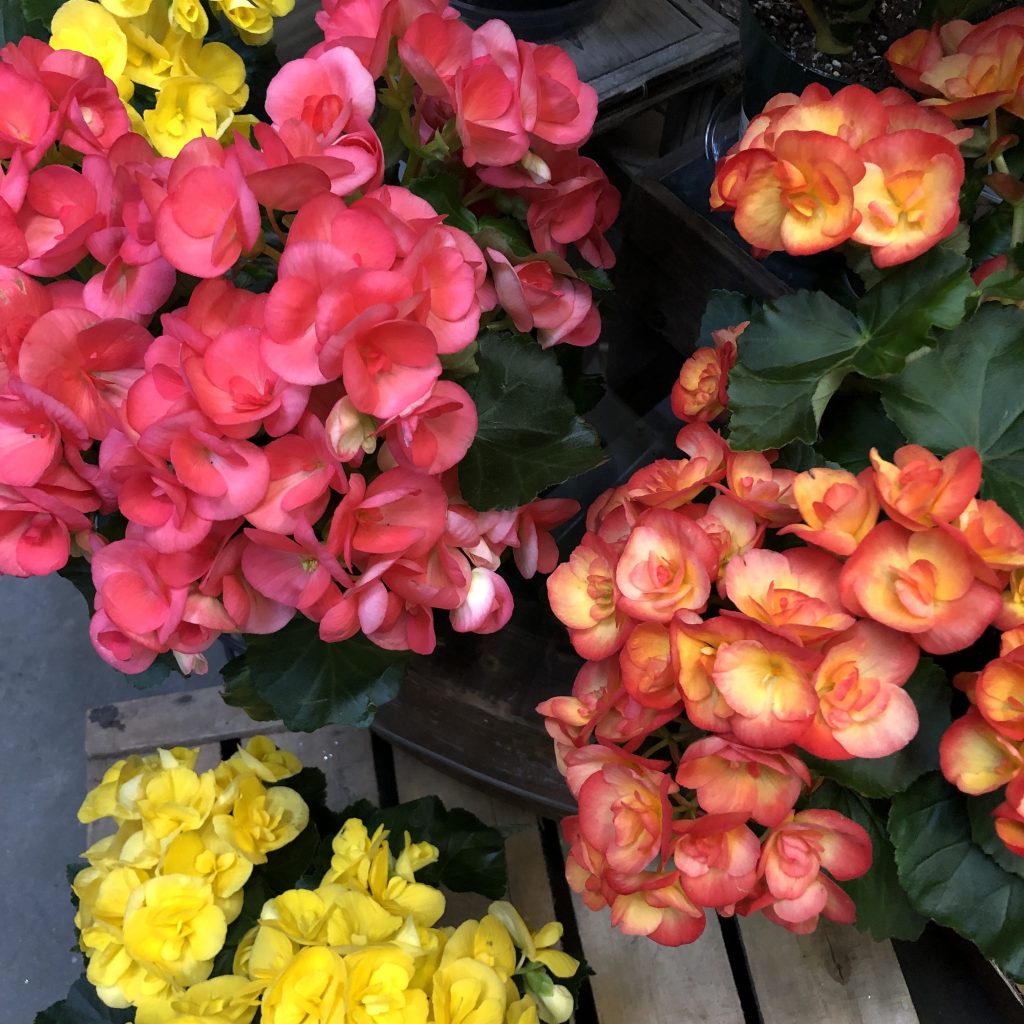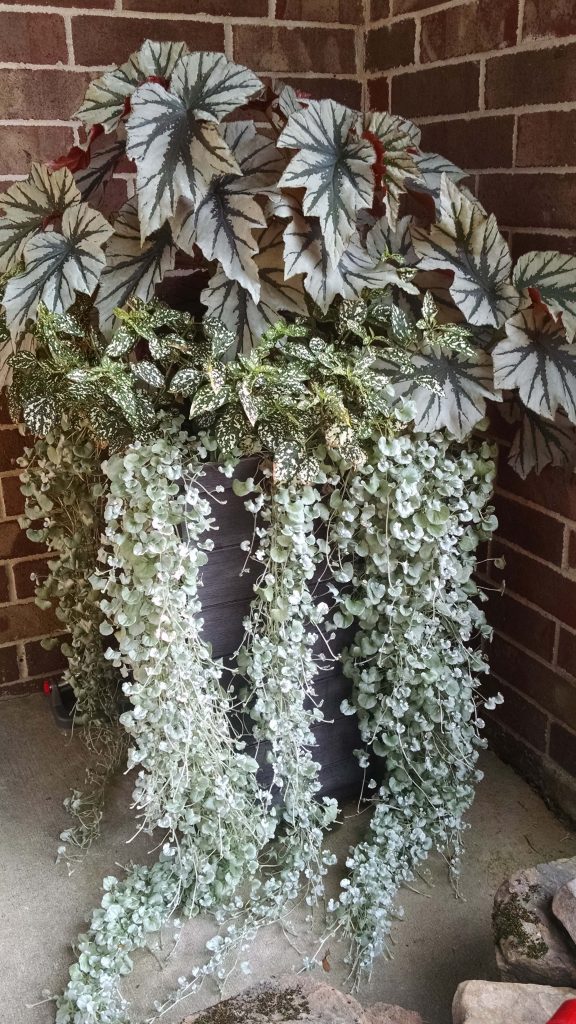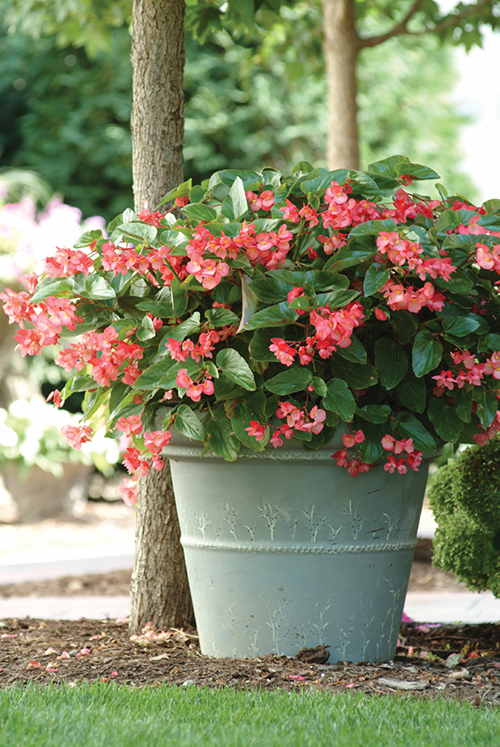All About Begonias
Begonias are one of our most popular plants and there are so many to choose from! Each has unique characteristic and therefore, different purposes in the landscape (or home). As we approach the spring planting season, we thought you might want to learn more about these versatile, eye-catching and easy to grow plants. This post and the personal growing notes included were provided by Jen M., our perennial grower.
Wax Begonia
Begonia semperflorens are probably one of the most popular of all the Begonias. They are commonly called wax begonias and they have many different varieties such as ‘Prelude’, ‘Encore’ and ‘Cocktail’. Some of them have green leaves, and here in Little Rock they do best in afternoon shade. Others with bronze leaves can be grown in 1/2 day sun or more. In full sun, these bronze leaves turn brilliantly red.
Wax begonias are easy care, warm season annuals that bloom from spring to fall. Grown in pots, or in landscape beds, these begonias bloom all summer providing lots of color, especially when grown en masse. You can find these bedding plants here in 6 pack flats, making them a low cost option for spring color plantings.
Hybrid Wax Begonia
Begonia benariensis are hybrid wax begonias. Think of them as wax begonias on steroids. ‘Whopper’ and ‘Big’ are readily available here during the spring season. Both of these varieties share the designation of being 50 mile-per-hour plants, which means they are eye-catching when viewed from a vehicle driving 50 MPH… pretty amazing! While regular wax begonias grow to 10 inches or so, these hybrids can reach up to 20-34 inches in height. Everything on these begonias is bigger- leaves, flowers and overall height. Why choose these over the standard smaller wax begonia? Versatility. ‘Whopper’ and ‘Big’ can be used in the middle or back of a landscape bed while their smaller cousins are used as edgers. Because they grow larger, they can be used in oversize pots as a centerpiece, and in beds, they make a bit more of a statement.
Tuberous Begonia
Tuberous Begonias have large, bright flowers; one popular series is called Non-Stop due to the consistent blooming. Boliviensis begonias are also tuberous and have very different look, with long narrow leaves and long blooms. These begonias do best in containers where it is easier to control watering. They need to grow on the dry side. Be mindful of the sun on these, they truly do not tolerate direct sun.
Rieger Begonia
Begonia x hiemalis is the scientific name for the Rieger begonia, which is a cross between tuberous and wax begonias. The result is beautiful glossy foliage with an abundance of dainty, flowers in bright colors. These begonias are typically grown as indoor plants, although they also do well in containers located in shady spots.
Cane Begonia
Cane Begonias are usually grown for their upright tall habit and beautiful leaves. By my front door, I wanted a monochromatic color scheme (shades of all the same color) and I chose silver/white (above image). The cane begonia ‘Looking Glass’ has the most intense silver leaf and was a showstopper all season long. The key to success was no harsh sunlight and moist but not wet soil. Done and done! Look for other cane begonias readily available such as ‘Sophie Cecile’, ‘Sinbad’, ‘Lady Vanderwilt’, and ‘Louis Burke’. Other plants in this container are White Polka Dot plant and ‘Silver Falls’ Dichondra (a 2019 Arkansas Diamonds plant selection).
Rex Begonia
Rex Begonias do bloom but the flowers pale in comparison to the amazing leaves which seem to glisten and sparkle in the light. Grow these babes in shade or bright, indirect light. In 2017, we offered a Rex begonia called ‘Jurassic Silver Swirl’ for the first time. Pretty new to the market, they have been bred for better vigor and seem to have a bit better heat tolerance. I grew them under my porch that had very little direct sun but bright light. They did great. I put 3 in a blue 12″x12″ pot and as you can see in the image above, they filled it out nicely.
Dragonwing Begonia
Dragonwing Begonias compete with wax begonias in a popularity contest. This is why they get their own category and both are winners in my book, just depends on where and how you want to grow them. Sometimes called Angelwings due to the shape of the leaf, this begonia does it all. It performs in pots, in the ground and also looks fantastic in hanging baskets. It can and will take some sun, although it looks the best when grown in morning sun and afternoon shade. Growing 15-24 inches tall and wide, Dragonwings are versatile, and a great beginner option for someone looking to green up their thumb. Dragonwing begonias were a 2015 Arkansas Diamond plant selection for good reason!
